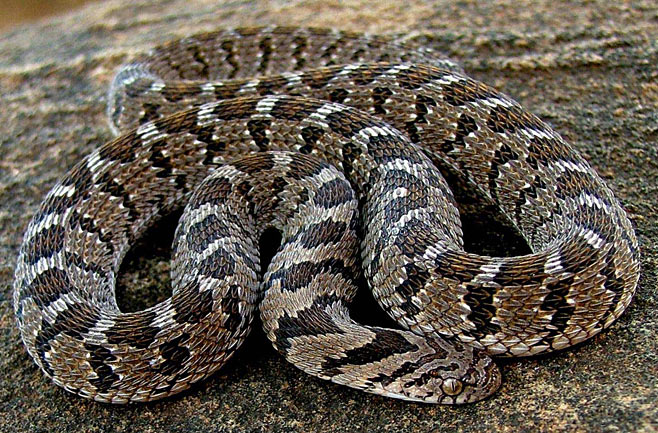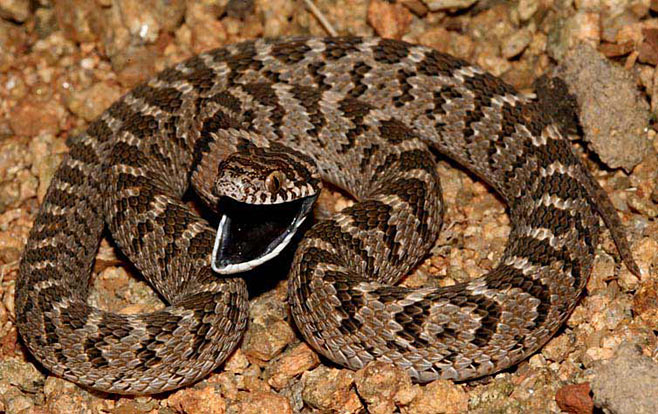|
Dasypeltis scabra (Common egg-eater, Rhombic egg-eater)
Gewone eiervreter [Afrikaans]; Ralegonyane [Tswana]
Life >
Eukaryotes
>
Opisthokonta >
Metazoa
(animals) > Bilateria > Deuterostomia >
Chordata >
Craniata > Vertebrata (vertebrates) > Gnathostomata (jawed vertebrates) >
Teleostomi (teleost fish) > Osteichthyes (bony fish) > Class:
Sarcopterygii (lobe-finned fish) > Stegocephalia (terrestrial vertebrates) >
Tetrapoda
(four-legged vertebrates) > Reptiliomorpha > Amniota >
Reptilia (reptiles) >
Romeriida > Diapsida > Lepidosauromorpha > Lepidosauria >
Squamata > Serpentes
(snakes) > Family: Colubridae > Subfamily:
Colubrinae > Genus:
Dasypeltis
 |
| Dasypeltis scabra (Common Egg-eater, Rhombic Egg-eater),
Limpopo, South Africa. [G. Tomsett
©, from
SARCA
Virtual Museum] |
 |
|
Dasypeltis scabra (Common Egg-eater, Rhombic Egg-eater), Gauteng [A. Coetzer
©, from
SARCA
Virtual Museum] |
Identification
Can be identified by its rhombic (diamond shaped) markings,
V-shaped markings on the neck, a black tongue, a black mouth and its strictly
nocturnal lifestyle. This snake has an average length of 0.75 m but may reach
just under 1.2 meters in length.
Distribution and habitat
This Egg-eater species is distributed throughout Southern
Africa and is found in any habitat except desert and forest areas.
Food
Feeds exclusively on
birds eggs which are crushed by bony
vertebral projections in the neck area.
Predators, parasites and disease
This snake species is fed on by other snakes and
birds of
prey (including
secretary birds and
snake eagles).
Reproduction
Oviparous (lays eggs), lays between 6 and 25 eggs in summer
and has been to produce more than one clutch in captivity.
Longevity
The average lifespan of this snake is
unknown.
Medical importance
Non-venomous and not dangerous to man.
Links
References
-
Broadley, D.G. 1983. FitzSimons' Snakes of Southern
Africa. Delta Books, Johannesburg.
-
Marais, J. 2004. A Complete Guide to Snakes of Southern Africa.
Struik Publishing, Cape Town.
|
